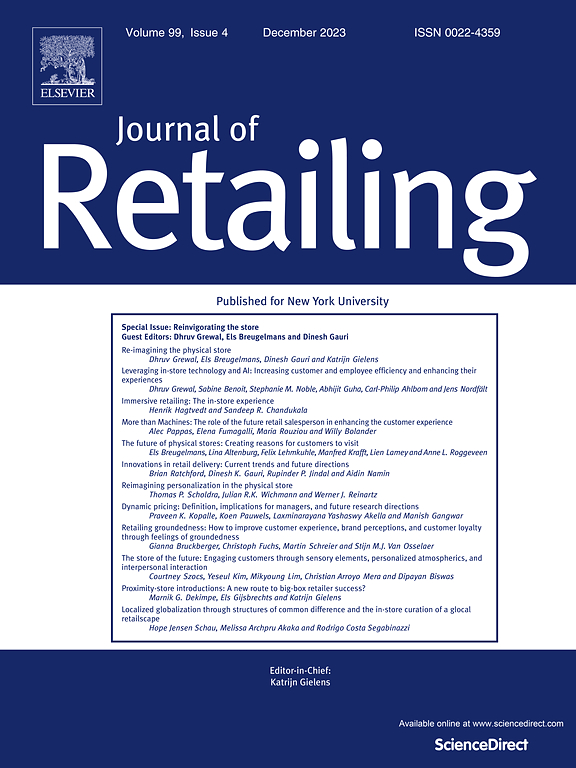Assessing fast fashion overstock through time-to-peak-sales
IF 10.2
1区 管理学
Q1 BUSINESS
引用次数: 0
Abstract
Product overstock is widely recognized as a principal contributor to diminished profitability and adverse environmental impacts in the fast fashion industry. While considerable attention has been directed toward optimizing the stock-in process, including the adoption of on-demand manufacturing and inventory optimization strategies, solutions for preventing overstock during the stock-out process have largely relied on end-of-season clearance. This reactive approach frequently yields suboptimal outcomes, thereby underscoring the urgent need for a proactive strategy that empowers managers to implement timely, strategic interventions to mitigate overstock problems. This study introduces time-to-peak-sales as an early warning system for the fast fashion industry, offering a viable method for the early detection of product overstock and establishing criteria for prioritizing unsold inventory that demands immediate managerial attention. Drawing on the product life cycle framework and the distinctive practices inherent in fast fashion, we define time-to-peak sales as the number of weeks required for a product to reach its peak sales, positing that it is positively associated with product overstock. Utilizing data from multiple brands across two distinct datasets, we conduct a comprehensive exploration of fast fashion overstock through comparative analyses, model-free descriptive statistics, and regression analyses. Our findings consistently underscore that time-to-peak-sales is a pivotal metric in inventory management, firmly anchored within the product life cycle framework.
通过销售高峰评估快时尚库存过剩
产品库存过剩被广泛认为是快时尚行业盈利能力下降和对环境造成不利影响的主要原因。虽然相当多的注意力都集中在优化库存过程上,包括采用按需制造和库存优化策略,但在缺货过程中防止库存过剩的解决方案在很大程度上依赖于季末清仓。这种被动的方法经常产生次优的结果,因此强调迫切需要一个积极主动的战略,使管理人员能够及时实施战略干预,以减轻库存过剩问题。本研究引入了销售高峰时间作为快速时尚行业的预警系统,为产品库存的早期检测提供了一种可行的方法,并建立了需要立即引起管理注意的未售出库存的优先级标准。根据产品生命周期框架和快时尚固有的独特实践,我们将销售高峰时间定义为产品达到销售高峰所需的周数,假设它与产品库存过剩呈正相关。利用来自两个不同数据集的多个品牌的数据,我们通过比较分析、无模型描述性统计和回归分析对快时尚库存进行了全面的探索。我们的研究结果一致强调,销售达到峰值的时间是库存管理的关键指标,牢固地固定在产品生命周期框架内。
本文章由计算机程序翻译,如有差异,请以英文原文为准。
求助全文
约1分钟内获得全文
求助全文
来源期刊

Journal of Retailing
BUSINESS-
CiteScore
15.90
自引率
6.00%
发文量
54
审稿时长
67 days
期刊介绍:
The focus of The Journal of Retailing is to advance knowledge and its practical application in the field of retailing. This includes various aspects such as retail management, evolution, and current theories. The journal covers both products and services in retail, supply chains and distribution channels that serve retailers, relationships between retailers and supply chain members, and direct marketing as well as emerging electronic markets for households. Articles published in the journal may take an economic or behavioral approach, but all are based on rigorous analysis and a deep understanding of relevant theories and existing literature. Empirical research follows the scientific method, employing modern sampling procedures and statistical analysis.
 求助内容:
求助内容: 应助结果提醒方式:
应助结果提醒方式:


